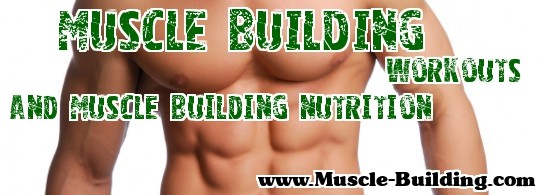Click Here For Your Free Muscle Building Magazine Subscription
Powerlifting Article
Powerlifting is a competitive sport that is also used to develop the body and help athletes prepare for other sports. Powerlifting gives individuals the opportunity to strengthen the body, perfect the body, test your abilities and help you feel good about yourself. The sport of powerlifting was developed to test the strength of its competitors in three events; the squat, the benchpress and the deadlift. Athletes compete with people of roughly the same body weight. Click the images below for a detailed description of each event. The Squat:
In the squat, the barbell is positioned horizontally across the back of the shoulders; the hands steady and balance the bar. From a standing position, the lifter bends the knees and lowers the body until the top surface of the legs at the hip joint is lower than the top of the knees. This defines a squat of legal depth; few people in the gym squat to this depth. From this lowered position, the lifter returns to an upright, standing position. Contrary to popular belief, the squat is not unusually tough on the lower back or knees. If done properly -- straight, upright back, knees in alignment with feet -- you should experience only the soreness indicative of a good workout! In periods of heavy training and in competitive meets, most lifters elect to wear a supportive squat suit. This is a tight fitting, one-piece suit that looks like high shorts with straps over the shoulders. The material is virtually non-stretch and sometimes takes a great deal of talcum powder, patience, and help to get in to! However, they give a great deal of support and protection to the hips and back. In addition to the suit, most powerlifters use stretchy knee wraps. These lend support to the joint and tendons of the knee. Last, but not least, just about every lifter will use a snug, heavy belt. The purpose of the belt is to aid the muscles of the torso (mainly the abs) in supporting the trunk of the body by increasing abdominal pressure. Most people use a leather belt of maximum width (just under 4" along the entire length) and thickness (1/2").The Bench Press:
Most people are familiar with the Bench Press -- lower a barbell to your chest and push it up, right? Well, there's a bit more to the technique in competitive powerlifting. First of all, there's a pause at the bottom. After you've lowered the bar to your chest and it is still, you are given the command to "press" it up. No bouncing the bar off your chest! Also, your head, shoulders, and buttocks must remain on the bench and the feet must be flat on the floor. These contact points cannot move during the lift. Sometimes you see lifters get an arch in their back between the buttocks and shoulders. This is legal and aids lifters who have stronger lower pectorials by changing the angle of the press. Bench press equipment is much simpler than the squat. Some type of one-piece lifting outfit is required; most people use a wrestling singlet. Bench press shirts may be used...they perform a similar function as the squat suit by supporting the shoulders and pecs. It's a very tight, non-stretch shirt that also may require talcum powder and several strong friends to squeeze you into it. It's my experience that roughly 70% of lifters use the shirts. Belts are optional as are wristwraps.
The Deadlift:
The deadlift involves lifting a loaded barbell from the floor (the bar is actually about 10" off the ground) to a standing position. There are two general styles of deadlifting: conventional and sumo. With conventional style, the feet are fairly close together, and the hands grasp the bar outside of the legs. The knees and hips are bent and do the majority of the lifting; the back must remain as straight and upright as possible. Sumo style uses a very wide stance and the arms grasp the bar in front of and between the legs. In some cases, the stance is so wide that the toes almost touch the plates at either end of the barbell. From the lowered position, the knees and hips are used to drive the body upward. This style is favored often by taller people with longer arms. In the deadlift, about half the lifters lift in a squat suit and half lift just in a singlet. They usually wear a wrestling shoe or slipper because the very thin sole enables them to get as close to the floor, and bar, as possible. Think about lifting in platform shoes, you'd have to get much lower to reach the bar -- a much tougher position to start from. The deadlift is probably the easiest lift to judge - it goes up or it doesn't. However, sometimes a lifter will "hitch" or ride the weight up his or her legs. This is not allowed. The lifter must "lock out" or be in a full standing position, not hunched forward.
Home | Articles | Nutrition | Exercises | Techniques | Workouts | Links
Click Here For Your Free Muscle Building Magazine Subscription
Disclaimer: This information is not presented by a medical practitioner and is for educational and informational purposes only. The content is not intended to be a substitute for professional medical advice, diagnosis, or treatment. Always seek the advice of your physician or other qualified health care provider with any questions you may have regarding a medical condition. Never disregard professional medical advice or delay in seeking it because of something you have read.
